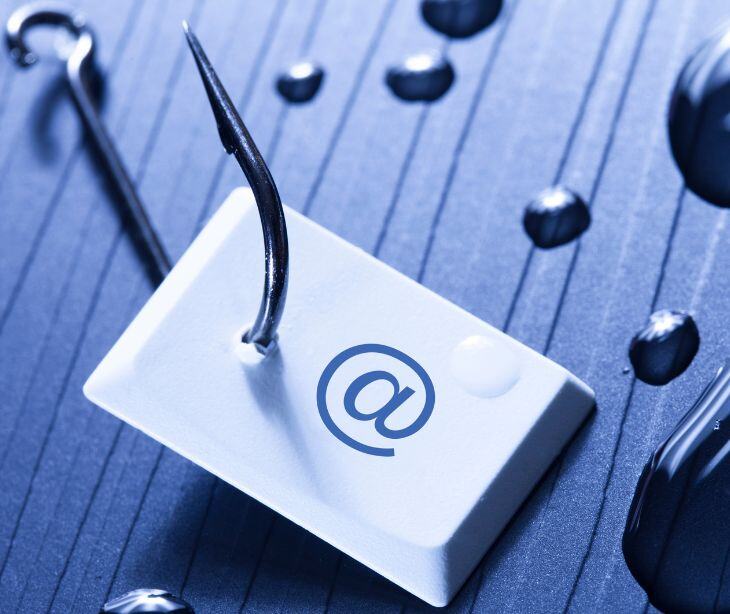
Spear phishing attacks are personalized cyberattacks that target specific individuals and organizations, utilizing highly tailored emails that appear legitimate to the recipient. Spear phishing attacks aim to steal sensitive information or infect devices with malware.
Differences between spear phishing and phishing
There are significant differences between phishing and spear phishing. Phishing attacks are broad and generic, attempting to trick users into sharing personal data like passwords and credit card details. These attacks are not personalized and rely on quantity rather than quality.
On the other hand, spear phishing attacks are highly targeted and personalized. They involve extensive research on the intended target, making the emails appear more legitimate. Cybercriminals invest significant time and effort into crafting spear phishing attacks, increasing their chances of success.
Related: What is an email phishing attack?
How do spear phishing attacks work?
To successfully execute a spear phishing attack, cybercriminals follow a series of steps:
Defining the goals
Attackers determine the objectives of the attack, whether it's stealing login credentials and credit card information or perpetrating identity theft and financial fraud.
Choosing the targets
Preliminary research is conducted to identify specific individuals or companies that are likely to yield high-value information.
Thorough research
A shortlist of targets is created, and extensive research is carried out to gather as much information about the targets as possible. This includes details about their work, personal life, friends, family, and online shopping habits.
Crafting the attack
Spear phishing emails are created to appear personalized and legitimate using the gathered information and social engineering techniques. These emails often come from individuals or companies the target regularly interacts with and contain information that could be authentic.
Executing the attack
The spear phishing email is sent to the target, typically requesting an immediate response with sensitive details or containing a link to a spoofed website. The recipient may be asked to enter their information on the fraudulent site or download an attachment that installs malware on their device.
In the news: Spear phishing scheme steals $1.7M in NFTs from a Crypto VC
Signs of spear phishing
Identifying the signs of a spear phishing scam is necessary in preventing these attacks. Here are some red flags:
Sense of urgency
Spear phishing emails often create a sense of urgency, pressuring the recipient to take immediate action. They may claim to be from a company manager and require login details for time-sensitive actions.
Emotion-triggering language
The language used in the email is designed to trigger emotional responses like fear or guilt, motivating the recipient to act without question.
Suspicious email addresses
Pay attention to the email address itself. Check for incorrect domains or unusual name formats that may indicate a fraudulent source.
Spelling and grammar mistakes
Emails from reputable organizations, such as banks, typically undergo rigorous proofreading. It could be a sign of a phishing attempt if you notice obvious spelling and grammar errors.
Requests for sensitive information
Beware of emails asking for personal details, passwords, or other sensitive information.
Misleading links
Check the links in the email. Misspelled or incorrectly formatted links or links that don't match the destination address when hovering over them should raise suspicion.
Unsolicited attachments
Be wary of unexpected email attachments, especially those with unusual file names.
Read also: Protecting healthcare against spear phishing
How to prevent spear phishing attacks
While there is no foolproof method to prevent spear phishing attacks, implementing certain measures can significantly reduce the risk. Here are some expert tips to help prevent spear phishing:
- Use a virtual private network (VPN): Protect your online activity using a VPN that encrypts your internet connection.
- Install anti-virus software: Scan all emails for potentially malicious attachments, links, or downloads using reliable anti-virus software.
- Verify email sources: Learn to verify the authenticity of an email source before taking any action.
- Be cautious with links: Avoid clicking links in emails. Instead, independently visit the organization's website and navigate to the necessary page.
- Keep software updated: Ensure all software, including operating systems and applications, is updated with the latest security patches.
- Limit personal details online: Review your social media profiles and remove any information phishers could use. Set privacy settings to the highest level.
- Use strong passwords: Employ a password manager, create unique and complex passwords for each account, and change them regularly.
- Enable multifactor authentication: Whenever possible, enable additional authentication measures such as multifactor or biometric authentication.
- Verify suspicious emails: If in doubt about the source of an email, reach out to the person or organization to verify its authenticity.
- Implement security awareness training: Companies should educate employees about the risks of spear phishing attacks and provide training on recognizing and handling suspicious emails.
See also: HIPAA Compliant Email: The Definitive Guide
In the news
The FBI, State Department, and NSA issued a warning about North Korean state-sponsored cyber threat actors exploiting poorly configured DMARC policies to conduct spear phishing campaigns. These actors send spoofed emails appearing legitimate, often posing as journalists or experts in East Asian affairs with ties to North Korean policies. John Riggi, AHA’s cybersecurity advisor, stressed the broader risk, urging organizations to ensure DMARC is properly configured to detect such phishing attempts. Riggi stressed ongoing staff training and vigilance against cyber threats, indicating the important role of DMARC in defending against sophisticated social engineering tactics.
FAQs
What is spear phishing in the context of healthcare?
Spear phishing in healthcare involves targeted email scams directed at specific individuals or departments within healthcare organizations. Attackers personalize messages to deceive recipients into revealing sensitive information or downloading malicious attachments.
How does spear phishing impact healthcare organizations?
Spear phishing can compromise patient data, disrupt operations, and lead to financial losses or reputational damage. Successful attacks can result in unauthorized access to electronic health records (EHRs) or sensitive financial information.
What are common tactics used in spear phishing attacks against healthcare professionals?
Attackers use tactics like impersonating trusted colleagues or reputable organizations, creating urgency to click links or download attachments, and exploiting current events or medical terminology to increase credibility.
How can healthcare professionals identify and prevent spear phishing attacks?
Professionals should scrutinize sender email addresses for discrepancies, avoid clicking on suspicious links or downloading attachments from unknown sources, and verify requests for sensitive information through secure channels.
What should healthcare organizations do to enhance defenses against spear phishing?
Organizations should conduct regular cybersecurity training for staff, implement multi-factor authentication (MFA), deploy advanced email filtering and anti-phishing technologies, and enforce policies for reporting and responding to suspicious emails promptly.
Subscribe to Paubox Weekly
Every Friday we'll bring you the most important news from Paubox. Our aim is to make you smarter, faster.




